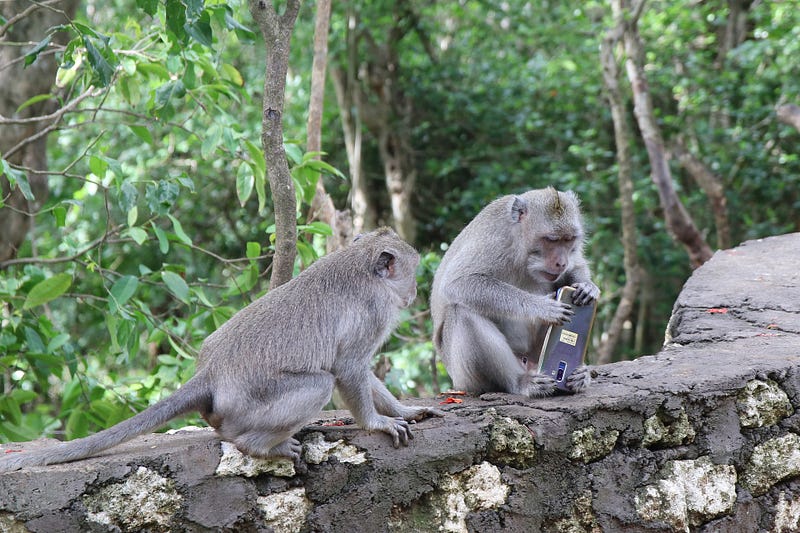Quirky Animal Behaviors: Insights from Recent Research
Written on
Chapter 1: Oddities in the Animal Kingdom
The animal kingdom is filled with surprising and unusual behaviors, from pandas that enjoy rolling in manure to birds that seem to moonwalk in the Amazon. Recent studies have highlighted some of the strangest behaviors observed in species like Balinese monkeys, Guamanian brown tree snakes, and Ecuadorian glass frogs.
Quoting a recent study, researchers shared insights on the fascinating behaviors of various animal species.
Section 1.1: Monkey Negotiators
A study published on January 11 in the Philosophical Transactions of the Royal Society B: Biological Sciences examined monkeys at the Uluwatu Temple in Bali, Indonesia, revealing their remarkable negotiation skills.
Wild long-tailed macaques (Macaca fascicularis) have developed a strategy for securing food by stealing items from tourists. When the monkeys take valuable objects, such as electronic devices, they wait for an appealing food offer before returning the item. Conversely, less valuable items like empty bags yield smaller food rewards.

The monkeys skillfully assess the value of stolen items, which can range from mobile phones to keyrings. One notable instance involved a monkey holding onto an item for 25 minutes, engaging in a negotiation that lasted 17 minutes. Older monkeys exhibited superior skills in this process, demonstrating learned behavior through experience. The researchers concluded that this is potentially the first instance of a culturally maintained token economy among free-ranging animals.
Section 1.2: Lasso-Like Snakes
Next, we turn our attention to Guam, where a unique snake locomotion technique has been uncovered. Research published on January 11 in Current Biology details how brown tree snakes (Boiga irregularis) utilize a lasso-like grip to climb trees and poles.
Before this study, snake movement was categorized into four primary types. However, these snakes have demonstrated an innovative climbing method that allows them to ascend smooth surfaces, which poses a significant threat to the island's native bird populations. The technique was discovered during efforts to protect these birds.
Daniel Goldman, a biophysicist at Georgia Tech, remarked on the complexity of this movement, noting that it surpasses current human technology.
Chapter 2: Frogs and Their Unique Courtship
In the loud environments created by waterfalls, male Ecuadorian glass frogs (Sachatamia orejuela) have adapted by using visual signals to attract mates. This behavior, reported in the November issue of Behaviour, involves head bobs, hand waves, and foot flaps, supplementing their vocalizations.

Researcher Rebecca Brunner from the University of California, Berkeley, emphasized that while some frog species utilize visual communication in noisy environments, this is the first time such behavior has been documented in this particular frog family. She noted that these traits likely evolved independently among various species as a response to similar environmental challenges, illustrating the concept of convergent evolution.
Brunner hopes these findings will highlight the importance of biodiversity and conservation, reminding us of the wonders of our planet. "Fieldwork is always full of surprises," she said, "and you never know what discoveries you might encounter."